The 1936 Walking Liberty half dollar value ranges from $20.25 to $50 in circulated condition, with pristine uncirculated examples reaching up to $7,500. These coins were minted in Philadelphia without a mint mark, though Denver (“D”) and San Francisco (“S”) variants also exist. Value is primarily determined by condition and silver content rather than mint marks. The 1936 issue is not known for specific high-value errors like doubled dies or off-center strikes. Collectors should focus on coin grade and preservation when assessing worth, as most value appreciation comes from exceptional condition rather than rare minting errors.
The 1936 Walking Liberty half dollar represents a fascinating chapter in American numismatics, struck during the Depression era when silver still flowed through everyday commerce. With mintages spanning three facilities and values ranging from modest premiums to several thousand dollars, understanding what separates a $20 common piece from a $7,500 gem requires knowledge of mint marks, grading standards, and the subtle errors that occasionally escaped quality control at the United States Mint.
Understanding the 1936 Walking Liberty Half Dollar Series
The 1936 half dollar production occurred at three mint facilities: Philadelphia (no mint mark), Denver (D), and San Francisco (S). Philadelphia led production with 12,617,901 pieces, while Denver struck 4,252,400 coins and San Francisco contributed 3,884,000 pieces. These mintage figures, combined with survival rates and condition rarity, create a complex value hierarchy that rewards collectors who learn to identify quality and scarcity.
Adolph Weinman’s Walking Liberty design graced these coins, featuring Lady Liberty striding toward the sunrise on the obverse and an eagle perched on a mountain crag on the reverse. The mint mark, when present, appears on the reverse beneath the pine branch extending from the eagle’s perch. Philadelphia coins bear no mint mark, a detail that sometimes confuses newer collectors searching for the “P” designation that wouldn’t appear on half dollars until decades later.
The composition consists of 90% silver and 10% copper, with each coin containing 0.36169 troy ounces of pure silver. This silver content establishes a minimum melt value floor that fluctuates with precious metal markets, currently providing a baseline of approximately $8 to $10 regardless of condition or mint mark.
Value Breakdown by Mint Mark and Grade
Philadelphia Mint (No Mint Mark)
| Grade | Value Range |
|---|---|
| Good (G-4) | $20-$25 |
| Fine (F-12) | $22-$28 |
| Very Fine (VF-20) | $24-$32 |
| Extremely Fine (EF-40) | $30-$42 |
| About Uncirculated (AU-50) | $45-$65 |
| MS-60 | $75-$110 |
| MS-63 | $125-$185 |
| MS-65 | $425-$650 |
| MS-66 | $1,200-$1,800 |
| MS-67 | $5,500-$7,500 |
The Philadelphia issue, despite its high mintage, becomes genuinely scarce in grades above MS-65. Heritage Auctions reported a January 2023 sale of an MS-67 example for $7,200, while PCGS CoinFacts documents only 47 coins certified at this level across both major grading services. The jump from MS-66 to MS-67 represents the difference between a nice collector coin and a condition rarity that institutions and advanced collectors compete to acquire.
Denver Mint (D Mint Mark)
| Grade | Value Range |
|---|---|
| Good (G-4) | $22-$27 |
| Fine (F-12) | $25-$32 |
| Very Fine (VF-20) | $28-$38 |
| Extremely Fine (EF-40) | $38-$55 |
| About Uncirculated (AU-50) | $65-$95 |
| MS-60 | $135-$190 |
| MS-63 | $250-$375 |
| MS-65 | $850-$1,300 |
| MS-66 | $2,800-$4,200 |
| MS-67 | $12,000-$18,000 |
The 1936-D carries a modest premium over its Philadelphia counterpart in circulated grades but separates dramatically in mint state. The Denver facility produced coins with notoriously inconsistent striking quality during this period, particularly showing weakness on Liberty’s left hand and the eagle’s breast feathers. Stack’s Bowers documented a 2022 sale where an MS-67 specimen reached $16,800, reflecting the extreme rarity of fully struck, preserved examples.
San Francisco Mint (S Mint Mark)
| Grade | Value Range |
|---|---|
| Good (G-4) | $21-$26 |
| Fine (F-12) | $24-$30 |
| Very Fine (VF-20) | $27-$36 |
| Extremely Fine (EF-40) | $35-$50 |
| About Uncirculated (AU-50) | $58-$85 |
| MS-60 | $120-$170 |
| MS-63 | $220-$340 |
| MS-65 | $750-$1,150 |
| MS-66 | $2,400-$3,600 |
| MS-67 | $10,000-$15,000 |
San Francisco coins generally exhibit superior luster compared to Denver strikes but often show heavy bag marks from careless handling during storage and distribution. The population census reveals interesting patterns: NGC has certified 89 examples at MS-66, but only 12 at MS-67, illustrating how surface preservation becomes the primary challenge for coins that left the mint with strong strikes.
Critical Grading Factors That Impact Value
The difference between adjacent grades can mean hundreds or thousands of dollars, making accurate assessment essential. For Walking Liberty half dollars, grading focuses on several key areas that show wear first or reveal manufacturing defects.
Liberty’s left arm and hand receive the first contact during circulation. On coins graded Fine to Very Fine, this area shows flattening of the gown’s folds and loss of finger definition. Extremely Fine examples retain most detail but display light friction across the high points. Mint state coins preserve complete hand detail, though strike weakness can mimic wear and requires careful examination.
The obverse head and breast area presents the second critical zone. Circulated pieces show progressive flattening of Liberty’s facial features and breast contours. About Uncirculated coins retain sharp definition but display cabinet friction or light circulation on the highest points. Uncirculated specimens show full, frosty luster across these areas, though again, strike weakness particularly affects Denver and some San Francisco coins.
On the reverse, the eagle’s breast and leg feathers serve as primary indicators. Well-struck uncirculated coins display complete feather separation with crisp, raised details. Weakness in this area could result from either wear or inadequate striking pressure, requiring comparison with the obverse luster and contact marks to determine the cause. Grading services heavily weight this feature when assigning numerical grades to mint state coins.
Surface preservation separates MS-63 from MS-65 coins more than any other factor. MS-63 specimens show noticeable bag marks and contact points scattered across prime focal areas. MS-65 pieces limit these distractions to peripheral areas or beneath magnification. MS-66 and higher coins display essentially mark-free surfaces under normal viewing, with any contact points restricted to hidden areas or visible only under strong magnification.
Complete Error Types and Valuations
While the 1936 Walking Liberty series doesn’t feature the dramatic varieties found in some other issues, several error types do appear with varying frequency and collector demand.
Doubled Die Errors
No major doubled die varieties have been documented for any 1936 mint mark. Minor doubling occasionally appears on individual letters or date digits, particularly on Philadelphia strikes, but these represent die deterioration rather than true doubled dies. Examples with visible doubling under 5x magnification typically command $35-$75 premiums in AU-58 to MS-63 grades, with minimal interest from specialized error collectors.
Off-Center Strikes
Off-center errors occur across all three mints but remain genuinely scarce for Walking Liberty halves. A 5-10% off-center strike with full date visible trades for $250-$450 in VF-EF grades. More dramatic 15-25% off-center examples, assuming complete date and mint mark visibility, reach $600-$1,200. A 1936-D struck 20% off-center sold through Great Collections in August 2023 for $875 in VF-30 condition.
Coins struck more than 30% off-center typically lose either the date or mint mark, significantly reducing collector interest unless the error reaches spectacular proportions. A 1936 Philadelphia piece struck 40% off-center but retaining partial date sold for $425 in 2022, demonstrating the discount applied to incomplete specimens.
Clipped Planchet Errors
Straight clips, curved clips, and elliptical clips all appear on 1936 halves. Small clips affecting less than 5% of the planchet add $40-$85 to normal values in circulated grades. Substantial clips removing 10-20% of the planchet command $150-$325 premiums. The clip type matters: straight clips (from the leading or trailing edge of the planchet strip) generally bring less than curved clips (from the punching overlap area).
A 1936-S with a dramatic curved clip removing approximately 15% of the planchet sold for $380 in EF-40 condition through Heritage Auctions in March 2023. The mint mark remained fully visible, and the clip created an aesthetically pleasing crescent shape that enhanced desirability.
Die Breaks and Cuds
Minor die breaks appear as raised lines or irregular lumps on the coin surface, representing cracks in the die that filled with metal during striking. Small die breaks add minimal value, perhaps $15-$35, unless they create dramatic or unusual patterns. Major die breaks extending to the rim (called “cuds”) show as raised, featureless lumps where the broken die section failed to impress any design.
Cuds on Walking Liberty halves command significant premiums based on size and location. A small cud affecting 2-3mm of rim area might add $125-$225 to an otherwise circulated coin’s value. Large cuds extending 10mm or more along the rim, particularly when located on prime design areas like Liberty’s head or the eagle, reach $400-$750 in average circulated grades.
A 1936-D with a substantial cud obliterating Liberty’s extended hand sold for $625 in VF-25 condition in 2022. The dramatic visual impact and scarcity of major cuds on this series drove bidding beyond typical premiums.
Lamination Errors
Lamination defects occur when impurities in the planchet metal cause layers to separate, creating raised or peeling areas on the finished coin. Minor laminations add $30-$70 to circulated coins, while dramatic examples where metal has actually separated and peeled away command $100-$250 premiums depending on location and visual impact.
Strike-Through and Filled Die Errors
Strike-through errors happen when foreign objects (grease, cloth fibers, wire fragments) lay between the die and planchet during striking, creating weak or missing design elements. Grease-filled dies produce coins with weak, mushy details across part or all of the design. Minor strike-through errors add $25-$60, while dramatic examples affecting major design elements reach $100-$200.
A 1936 Philadelphia piece with a cloth strike-through creating a distinctive textured pattern across Liberty’s gown sold for $165 in AU-50 condition in 2023. The error’s unusual visual character and clear cause elevated it above typical strike-through premiums.
Detecting Counterfeits and Alterations
The Walking Liberty series attracts counterfeiters due to its silver content and collector demand. Several detection methods help identify problems before purchase.
Weight verification provides the first screening tool. Authentic 1936 halves weigh 12.50 grams with minimal tolerance. Coins weighing 12.30 grams or less, or 12.70 grams or more, deserve immediate suspicion. Counterfeits often use incorrect base metal compositions that alter weight noticeably.
Magnetic testing quickly reveals crude fakes. Authentic 90% silver half dollars show no magnetic attraction whatsoever. Any magnetic response indicates fake composition, though sophisticated fakes using non-magnetic metals can pass this test.
Dimension verification catches cast counterfeits and wrong-planchet errors. Authentic pieces measure 30.61mm in diameter and 2.15mm thick. Measurements outside these specifications by more than 0.1mm suggest problems, though genuine planchet variations do occasionally occur within tight tolerances.
Mint mark examination reveals added or altered designations. Forgers sometimes add “D” or “S” mint marks to common Philadelphia coins, creating artificial rarities. Genuine mint marks show consistent shape, depth, and position across authentic examples. Reference photos from PCGS or NGC help identify correct mint mark characteristics. Suspicious mint marks showing irregular depth, incorrect fonts, or unusual positions warrant expert authentication.
Surface analysis under magnification exposes cast fakes, which display rounded edges on letters and digits, tiny pitting across surfaces, and granular textures in fields. Die-struck counterfeits require more sophisticated examination but often reveal incorrect serif details, wrong letter spacing, or design elements that don’t match genuine coins.
Building a Complete Date and Mint Mark Set
Assembling a complete 1936 set presents manageable challenges and costs compared to many classic commemorative or early type coin series. Budget-conscious collectors can complete all three mint marks in Fine to Very Fine grades for $65-$95 total outlay, while those seeking About Uncirculated quality might invest $170-$245 for the set.
Collectors pursuing mint state examples face steeper costs and availability challenges. An MS-63 set requires approximately $600-$900, with the Denver mint mark representing the primary expense. MS-65 sets approach $2,000-$3,100, and this grade represents the practical limit for most collectors before condition rarity pricing takes over.
Strategic purchasing improves both cost efficiency and long-term satisfaction. The Philadelphia issue, despite its common status in lower grades, deserves patience when seeking MS-65 or better examples. Well-struck pieces with minimal bag marks appear regularly at major auctions, and waiting for quality rather than buying the first available example often saves money and regret.
The Denver mint mark requires particular attention to striking quality. Many 1936-D halves show weakness on critical design elements regardless of surface preservation. Collectors should prioritize well-struck AU-55 to MS-63 coins over weakly struck MS-64 examples at similar prices. The strike quality significantly impacts both eye appeal and future marketability.
San Francisco coins offer the best value proposition in MS-64 to MS-65 grades. These pieces typically cost less than equivalent Denver coins while offering superior strikes and attractive luster. Collectors building type sets or seeking single high-grade examples should consider 1936-S pieces as the ideal balance of quality, availability, and value.
Where Serious Collectors Focus Their Attention
Advanced numismatists pursuing Walking Liberty halves concentrate on three primary areas: condition census coins, fully struck examples, and toned specimens with exceptional color.
Condition census collecting targets the finest known examples of each date and mint mark combination. For 1936 issues, this means competing for MS-67 and MS-68 specimens that appear at auction perhaps once or twice yearly. These coins command five-figure prices and require substantial capital, but they represent genuinely rare pieces that major collections feature prominently.
Strike quality collecting emphasizes technical excellence over numerical grade. A sharply struck MS-64 coin with complete hand and feather detail often provides more satisfaction and holds value better than a weakly struck MS-65 piece with superior surface preservation but mushy design elements. Organizations like the Walking Liberty Collectors Club maintain strike ratings and population data helping collectors identify superior examples.
Toned specimen collecting pursues coins with attractive, original color acquired through decades of storage in paper envelopes, albums, or bank bags. Rainbow-toned Walking Liberty halves with blues, greens, golds, and reds command significant premiums when the color enhances rather than obscures design details. A 1936-D graded MS-65 with spectacular obverse rainbow toning sold for $2,400 in 2023, nearly double the price of typical white MS-65 examples.
Smart Acquisition Strategies for Today’s Market
The current market environment offers both opportunities and challenges for collectors pursuing 1936 Walking Liberty halves. Understanding where to find quality coins and how to evaluate pricing ensures successful acquisitions.
Major auction houses like Heritage, Stack’s Bowers, and Great Collections regularly feature 1936 halves across all grades and mint marks. These venues provide certified coins with clear photographs, detailed descriptions, and established return policies. Auction purchases typically include buyer’s premiums of 17.5-20%, which should factor into budget planning and value comparisons.
Online marketplaces including eBay host thousands of Walking Liberty halves, but quality varies dramatically. Successful eBay purchasing requires careful attention to seller ratings, return policies, and third-party certification. Coins certified by PCGS or NGC provide authentication and grading assurance, though collectors should still examine photos carefully for quality issues within assigned grades.
Local coin shops offer hands-on examination before purchase and establish relationships that yield long-term benefits. Shop owners often provide insights about incoming inventory, reserve interesting pieces for regular customers, and offer competitive pricing on raw coins that savvy collectors can grade themselves. Building rapport with knowledgeable dealers creates acquisition channels that internet-only collectors miss.
Coin shows present concentrated buying opportunities with dozens or hundreds of dealers offering inventory for direct inspection. Major regional and national shows attract dealers who bring significant Walking Liberty inventory, and the competitive environment often produces better pricing than individual shops. Shows also allow side-by-side comparison of multiple coins before purchasing, helping collectors develop grading skills and quality standards.
Maximizing Your Investment Through Proper Storage
Preservation protects both the monetary value and collectible appeal of 1936 halves. Several storage approaches offer different balances of protection, accessibility, and cost.
Individual plastic holders from companies like Saflip, BCW, and Lighthouse provide basic protection against handling damage and environmental exposure. These inert holders prevent PVC contamination and fingerprints while allowing easy viewing and reorganization. Holders cost $0.15-$0.40 each and work well for circulated coins and duplicates.
Certified slabs from PCGS, NGC, CAC, or ANACS offer maximum protection and marketability for valuable coins. The sealed, sonically welded holders prevent environmental damage, provide tamper evidence, and include grading information that facilitates resale. Certification costs $25-$150 per coin depending on service level and declared value, making economic sense for coins worth $100 or more.
Album storage in Dansco or Whitman products creates attractive display sets while offering moderate protection. Quality albums use inert materials that won’t damage coins, though the exposure to air and frequent handling increases risk compared to individual holders or slabs. Albums work well for circulated type sets and lower-value mint state coins where handling and viewing enjoyment outweighs maximum preservation concerns.
Environmental control prevents the chemical reactions that cause toning, spotting, and corrosion. Store coins in stable temperature and humidity environments, ideally 65-70°F with 30-40% relative humidity. Avoid attics, basements, and other areas with fluctuating conditions. For valuable collections, consider climate-controlled storage or bank safe deposit boxes.
Building Knowledge Through Research and Community
Successful collecting extends beyond acquisition to encompass ongoing education and community participation. Several resources help collectors deepen their understanding of 1936 Walking Liberty halves.
Reference books provide foundational knowledge about the series. “A Guide Book of Walking Liberty Half Dollars” by Q. David Bowers offers comprehensive coverage of design history, minting processes, and collecting strategies. “The Complete Guide to Walking Liberty Half Dollars” by Bruce Fox details varieties, die states, and population reports. These books cost $25-$60 and deliver value far exceeding their modest prices.
Online resources including PCGS CoinFacts, NGC Coin Explorer, and USA CoinBook provide current pricing, population reports, and auction records. These free resources help collectors track market trends, identify population rarities, and research specific coins before purchasing. Updated regularly with new auction results and certification data, they complement printed references with current information.
Collector organizations like the American Numismatic Association (ANA) and specialized groups focused on Walking Liberty halves offer publications, conventions, and networking opportunities. Membership provides access to experts, exclusive research, and communities of collectors who share knowledge and trading opportunities.
Discussion forums including CoinTalk, Collectors Universe, and Coin Community host active conversations about Walking Liberty halves. Experienced collectors share photographs, answer questions, and discuss new discoveries. These platforms provide real-time assistance and diverse perspectives that help newer collectors avoid mistakes and identify opportunities.
Your Path Forward in Walking Liberty Collecting
Starting a 1936 Walking Liberty collection today positions you within a vibrant collector community pursuing elegant designs, tangible silver content, and manageable acquisition costs. Whether your budget allows for a complete circulated set under $100 or supports the pursuit of gem mint state specimens, this series rewards attention to quality, patience in purchasing, and commitment to ongoing learning. Begin with the grade level matching your budget, focus on well-struck examples regardless of mint mark, and let each addition teach you something new about evaluating quality and recognizing value.
You may be interested:
- 1859 Indian Head Penny Coin Value Complete Errors List And No Mint Mark Worth Guide For Collectors
- 1911 V Nickel Coin Value Guide Complete Errors List And No Mint Mark Worth Today
- 1902 Dime Coin Value Complete Errors List With O S And No Mint Mark Worth Guide
- 1788 Quarter Coin Value Complete Guide Errors List And D S P Mint Mark Worth Revealed
- 1776 To 1976 Bicentennial Half Dollar Coin Value Complete Errors List And What Your D S And No Mint Mark Coins Are Actually Worth
- 1990 Penny Coin Value Errors List How D S And No Mint Mark Pennies Are Worth Thousands Of Dollars

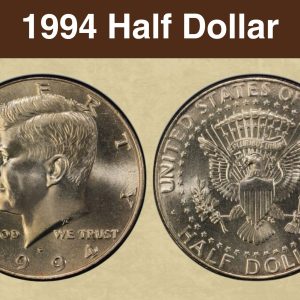
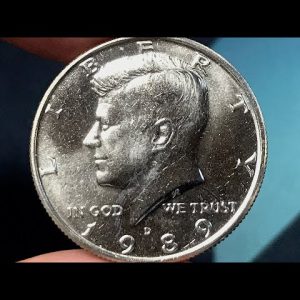
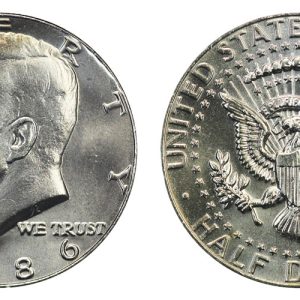
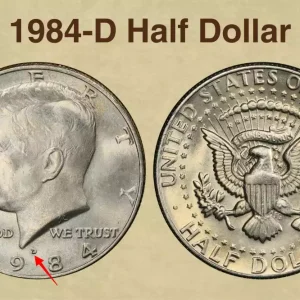
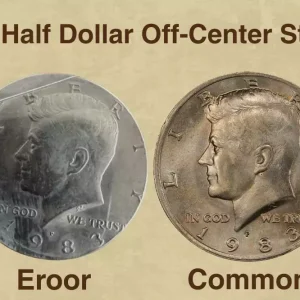
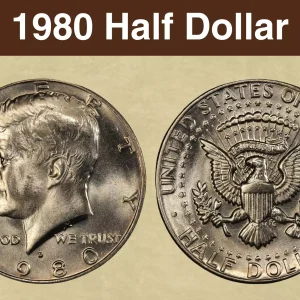
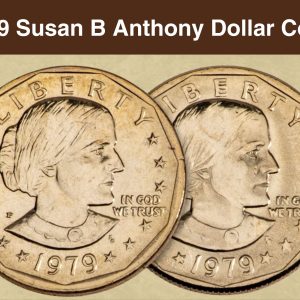
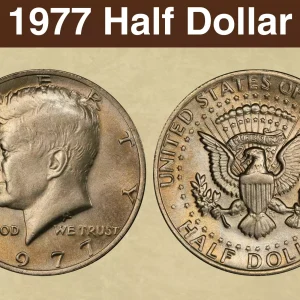
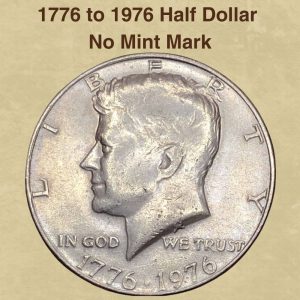
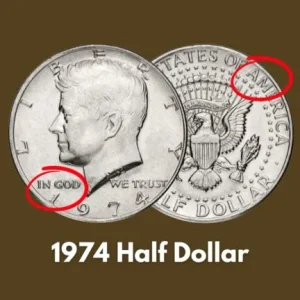
How much is a 1936 S Walking Liberty Half Dollar worth?
A 1936-S Walking Liberty half dollar’s value ranges from about $23 to $58 for circulated coins, with uncirculated (mint state) examples ranging from around $213 for a lower grade to several thousand dollars for high-grade examples. Factors like the coin’s condition, specific variety (like a doubled die obverse ), and professional grading affect the final price.
What is the hardest Franklin half dollar to find?
The early proof issues from 1950-1954 represent the most valuable regular-issue Franklin half dollars, with the 1950 proof commanding over $500 in Proof-65 condition. The low mintages—especially the 1950 proof with only 51,386 pieces—make these coins genuinely scarce.
How do you tell if you have a rare half dollar coin?
A half dollar becomes rare due to a combination of factors, including its year of mintage, silver content, unique mint errors, specific mint marks, and overall condition. Coins with historical significance, such as early 1964 Kennedy half dollars due to their 90% silver composition, are also more valuable. Errors like double dies or a lack of a mint mark on some coins can increase their rarity and worth significantly.
What is the rarest year of The Walking Liberty Half Dollar?
The rarest Walking Liberty half dollar is the 1921-D, which had the lowest mintage of the entire series with just 208,000 coins struck. The 1921 and 1921-S are also among the rarest dates due to their low mintages of 246,000 and 548,000, respectively. Other rare examples include certain early dates, particularly those with the mintmark on the obverse in 1917, and specific varieties like the 1938-D which had a low mintage.